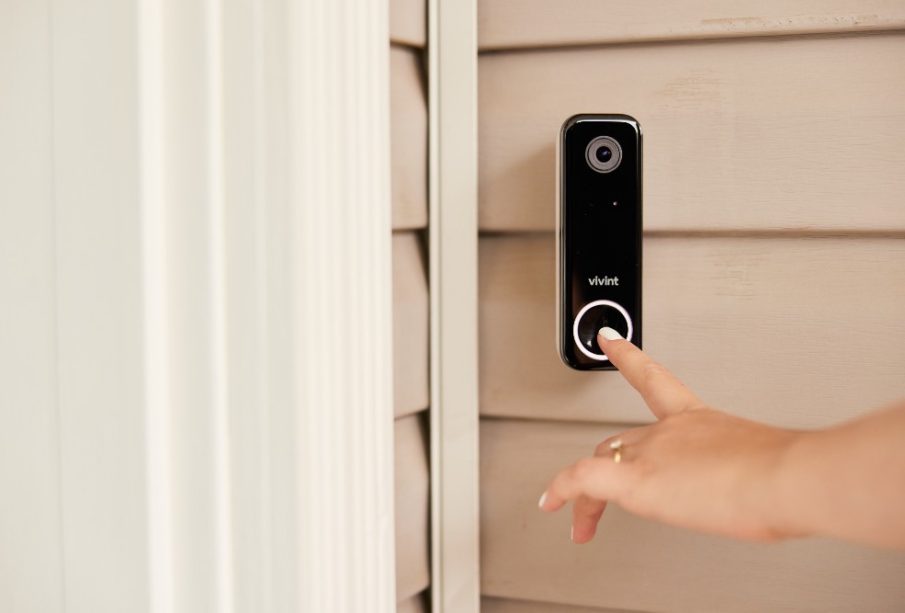Understanding Motion Detection in Video Doorbells: A Complete Guide

In today’s smart home ecosystem, the video door bell has become more than just a digital peephole—it’s an essential security tool. Central to its effectiveness is motion detection, a feature that empowers users to know exactly when someone is at their door, even before they ring the bell. Whether it’s tracking deliveries, deterring potential intruders, or just monitoring foot traffic, motion detection brings peace of mind with real-time alerts and recordings.
However, not all motion detection systems are created equal. To make the most of your smart security setup, it’s important to understand how this technology works, what factors influence its performance, and how you can optimise it for your home.
Smart Sensing: Different Motion Detection Technologies Explained
Motion detection in a video door bell is driven by several technologies, each with its own way of sensing movement and triggering alerts. The most common types include:
Passive Infrared Sensors (PIR):
These sensors detect heat signatures from living beings. When a person or animal passes in front of the sensor, it senses a change in infrared radiation and sends an alert. PIR is energy-efficient and ideal for detecting human movement, but it may be less effective in extreme temperatures or through glass.
Radar or Microwave Sensors:
These use high-frequency waves to detect motion. When these waves bounce off a moving object, the sensor picks up the change and activates the camera. Radar sensors can cover a wider area and are more sensitive than PIR, which can sometimes lead to more false alerts.
Camera-Based Motion Detection (Pixel Comparison):
This method uses software algorithms to detect movement by comparing frames in a video feed. If a difference is noted, like someone approaching, the system recognises this as motion. It’s more accurate in distinguishing between types of movement, but can consume more power and data.
Some advanced video door bells combine these methods for better reliability. For instance, combining PIR with camera-based detection allows for more intelligent recognition of events and reduces unnecessary alerts.
What Really Triggers Motion? Key Influencing Factors
Motion detection doesn’t work in a vacuum. Several environmental and technical factors determine how well your video door bell detects movement:
Positioning and Angle:
Where you mount the device matters; a doorbell placed too high or at a poor angle may miss motion or pick up irrelevant activity, like cars on the street. Proper placement ensures the detection zone is focused on the area you actually care about—your doorstep.
Field of View:
The wider the camera’s field of view, the more area it can monitor. However, a larger viewing area may also increase the chance of capturing unnecessary motion. Balancing the angle and range is crucial for effective surveillance.
Lighting Conditions:
Too much direct sunlight or complete darkness can hinder motion detection. Most modern doorbells are equipped with night vision or infrared sensors to counter this, but inconsistent lighting, like flickering lights or shadows, can still create detection errors.
Weather and Environmental Noise:
Wind-blown branches, moving shadows, or heavy rain can trigger false alerts. Some video door bells allow sensitivity adjustments to filter out such environmental “noise” and focus only on human activity.
Smart Features That Take Motion Detection to the Next Level
Beyond basic sensing, today’s video door bell models are equipped with intelligent features that enhance motion detection and make alerts more actionable.
Motion Zones:
This feature allows users to define specific areas where they want motion to be detected within the camera’s field of view. For example, you can exclude a busy street and focus only on your porch or driveway. It’s a simple yet powerful way to cut down on false notifications.
Person Detection and AI-Based Alerts:
Advanced models use artificial intelligence to distinguish between people, vehicles, animals, and other motion types. This smart filtering helps you receive only relevant alerts, such as when a person lingers near your door, while ignoring passing cars or squirrels.
Pre-Buffering and Activity History:
Some systems begin recording a few seconds before motion is officially detected. This pre-buffering gives a fuller picture of what’s happening, instead of capturing only the tail end of an event. Combined with cloud storage or local video history, you can review and respond more effectively to incidents.
Get the Most Out of Motion Detection: Tips for Smart Setup
Installing a video door bell is just the beginning. To truly harness the power of motion detection, keep these best practices in mind:
Position It Strategically:
Place the device about chest height and angled slightly downward for optimal detection of people at your door. Avoid pointing it directly at reflective surfaces or bright lights.
Fine-Tune Sensitivity Settings:
Adjust the detection sensitivity to suit your environment. A high setting might capture every passing bug or leaf, while a low setting might miss someone approaching slowly. Regularly test and tweak these settings for best performance.
Create Custom Motion Zones:
Use the app or control interface to map out the most relevant zones for detection. This will reduce unnecessary alerts and ensure your camera focuses on critical areas.
Stay Updated:
Keep your device firmware and app updated to benefit from the latest enhancements in motion detection accuracy, privacy settings, and AI capabilities.
In Closing
Motion detection is at the heart of what makes a video door bell such a powerful addition to your home security setup. By understanding how it works, what affects its performance, and how to fine-tune its settings, you can transform a simple doorbell into a smart guardian of your doorstep.
Smart motion detection not only adds a layer of protection but also empowers you with greater awareness of your surroundings. With the right setup, you’ll always be one step ahead—day or night, rain or shine.










